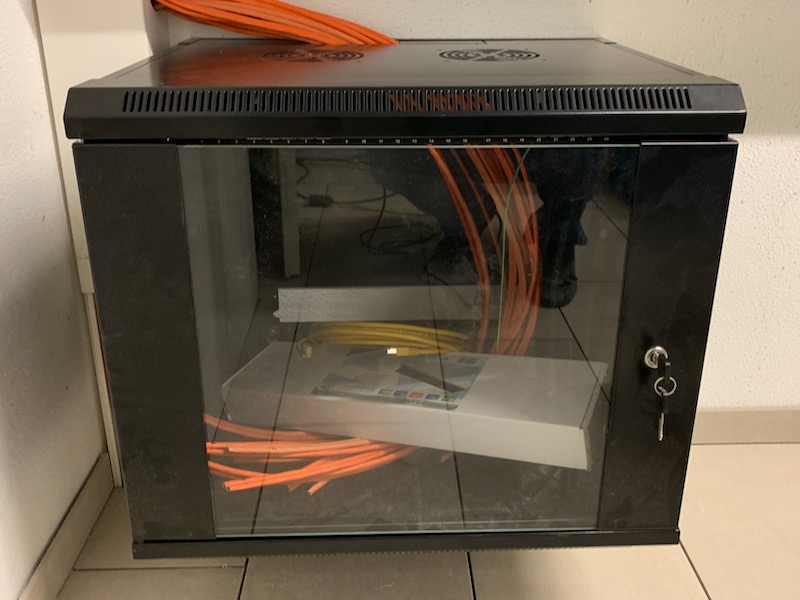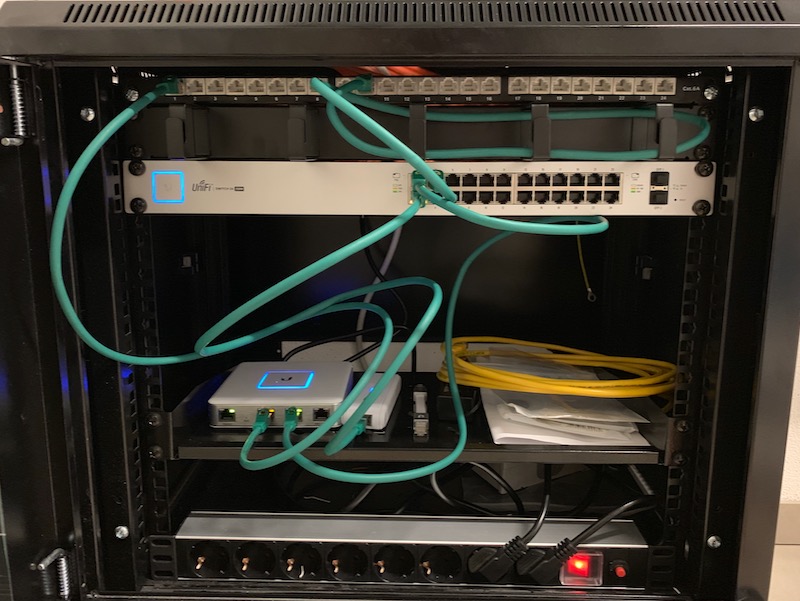Since I already posted my Loxone hardware setup recently, let’s continue the hardware journey with my network setup. This post will provide a quick overview over the most important components and the reasoning behind my choices.
Disclaimer: Some of the links provided below are Amazon affiliate links, which means I will get a small reward in case you buy something on Amazon after clicking these.
Initial Considerations
When making the first plans four our own house (as opposed to a rented apartment), I wanted to have a decent network infrastructure, meaning wired connections to important rooms, as well as good WiFi coverage in all parts of the house. I had used lots of end-user networking gear throughout the years, including several kinds of WiFi repeaters (mesh as well as non-mesh ones), and a few generations of Powerline products, which all had their quirks and did not offer a good experience. Even the better WiFi routers still had limited configuration options, so I started to look for more professional gear.
My Choice: Ubiquiti UniFi
It quickly became clear that my Twitter bubble (e.g. Marco Arment, Troy Hunt) had settled on Ubiquiti’s UniFi line of products for that purpose. In addition, I had already some positive Ubiquiti experience when setting up an EdgeRouter X at a friend’s office, so I decided to give the UniFi setup a try. In particular, I chose:
- Switch US-24-250W *
- Security Gateway for routing
- Cloud Key * for hosting the management software
- 2 nanoHD access points for WiFi
* newer product generation available in the meantime
The reason for choosing a PoE switch was not only providing both WiFi access points with power, but also our intercom / door bell, and the fact that I can just hook up small, PoE-powered switches to any network outlet in the house without having to think about power supply.
The most interesting things about the UniFi setup were: (1) The nanoHDs met my wife’s aesthetic standards, and (2) during the construction phase everyone pointed at the orange cables coming out of the walls two meters above the floor and asked what those were supposed to do up there.
DSL and Phone Service
As in many rural areas in Germany, the only option for broadband connectivity at my home address is DSL over copper phone wire. Since at least the backbone has recently been modernized to fiber, I do get a full 100 MBit (down – about 40 MBit up), which has been a great improvement compared to before. So my question was: What is the best option to connect my USG to the outside world, and how do I integrate telephony in that setup? Searching the internet, I came across iDomiX’s YouTube channel, which is a German-speaking tech channel with lots of content related to UniFi and AVM FritzBox products.
I followed Dominik’s recommendation and got myself a DrayTek Vigor 165 DSL modem to provide WAN connectivity to the Security Gateway. For landline telephony, I degraded my FritzBox 7590 (which I already had) to a phone endpoint and DECT base station. Since my old DECT phone was getting unreliable, I exchanged it with a Gigaset CL660HX, which works perfectly in combination with a FritzBox.
Housing
With the exception of the access points and the phone, all components are all housed in an Intellinet 711777 Wallmount Cabinet in my basement and will soon be provided with power through an Online Zinto 800 UPS sitting beneath.


Ein Kommentar zu „My UniFi Network Setup“